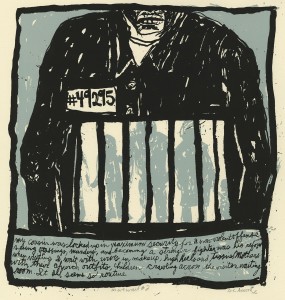Entering Jail: A Short Description…
I came across an interesting article last week describing a day at a jail. I think that this type of short ethnographic snippet is valuable to increasing the public’s understanding of criminal legal system. Unfortunately, I don’t know how widely read these accounts really are. I thought that I would highlight a piece of the article here. I encourage readers to read the full article:
People enter the Eastern Shore Regional Jail either directly from court in police custody after a conviction, or by presenting themselves at the door on a certain date if specified by the court.
For example, a person who is permitted to serve his time on weekends will check himself in by 6 p.m. on a Friday.
The inmate-to-be sheds whatever clothes and possessions he might have and changes into a prison jump suit.
His belongings are stored in bags in a special room. He or she is allowed to possess five pairs each of underpants, undershirts, socks and three pairs of insulated underwear.
According to a sign posted in the jail booking area, the only requirement is that the underwear be white and that no sleeveless undershirts, described as “wifebeaters” may be worn.
The inmate may wear his own athletic shoes if they are all white or all black and have no metal inside or out. He may keep a generic watch and a simple wedding band. Anything fancy or valuable will be stored with his other belongings.
He is issued a cup with a toothbrush, toothpaste, comb and shaving supplies. Women may have no cosmetics or makeup.
A prisoner may keep up to five paperback books in the cell with him — no hardbacks and no more than five at any one time. The books will be checked for inappropriate material and contraband, said Kennedy.
Each new inmate is immediately given a test for tuberculosis and kept separate from the general population until the test shows the person to be free of the disease. He is also given a book of rules and regulations that must be followed.
If he is serving weekends or is in jail on a civil charge such as failing to meet child support payments, he goes to a dormitory area — where there are bunk beds in a large two-story space — rather than to the individual cells where the medium and maximum security prisoners are held.

